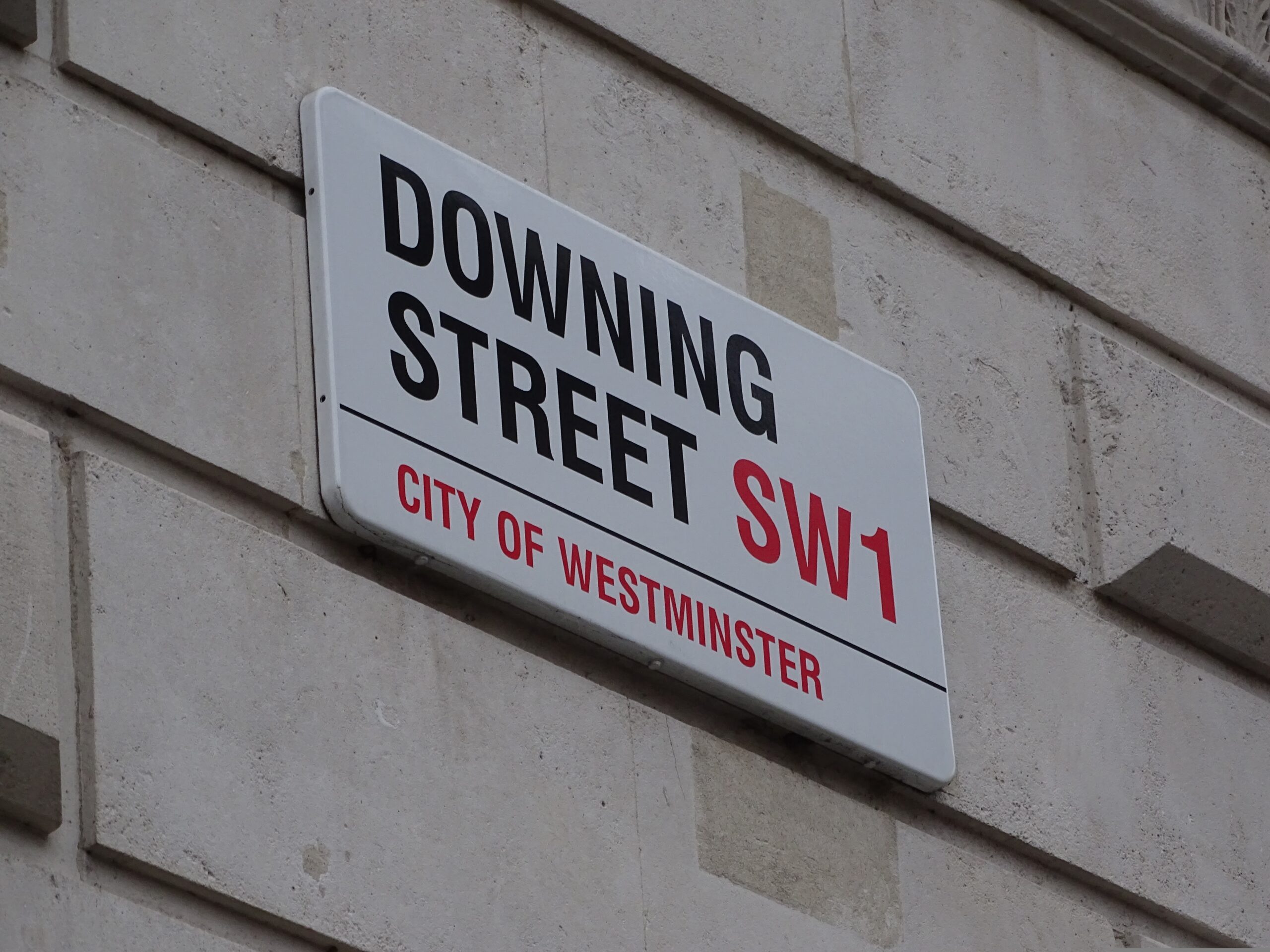PublicTechnology research discovers what 50 of central government’s most popular digital services each cost taxpayers and users – with prices per transaction ranging from 1p to almost £50
To get a closer look at the full league table, just click on the image at the bottom of this article to enlarge, magnify or download it
One of the primary drivers behind digital transformation is cost savings and increased efficiencies.
With an ever-greater percentage of government services being fulfilled digitally, those who fund their delivery – either by shelling out for them directly or simply via paying their taxes – could reasonably expect the cost of providing such services to be going down.
The onus is on central government departments to publish online more and more data that demonstrates how well – or otherwise – their major services are performing. This means that a wealth of information is now available to help users and taxpayers understand whether the services the government is providing for them and their fellow citizens represent good value for money.
Five services with lowest cost per transaction
1. Customs transactions £0.01 (HMRC)
2. Vehicle tax: checks by individuals £0.03 (DfT)
3. Stamp duty reserve tax transactions £0.06 (HMRC)
4. Payments made by HMRC £0.13 (HMRC)
5. Payments received by HMRC £0.20 (HMRC)Source: GOV.UK
This data, in many cases, includes a cost-per-transaction figure, which reveals how much each individual provision of a government service to a citizen or business takes out of the coffers of the department in question. Some could be covered by a few coppers, while others would require multiple trips to a cashpoint.
PublicTechnology has examined the stats for the 50 most frequently used central government digital services for which there is a cost-per-transaction figure, to come up with what could be considered a value-for-money league table. Leading the way is a service that costs a single penny to provide.
At the other end of the table, there are 11 services that cost the government more than £5 for each instance.
And these are not niche, infrequently used services. The least commonly transacted service on our list is still used more than 1,000 times per day. The most popular is used almost 4.4 million times a day, on average.
Included in our data are services provided by seven central government departments: HM Revenue and Customs; the Department of Health; the Department for Education; the Department of Transport; the Department of Business, Energy and Industrial Strategy; the Department for Environment, Food and Rural Affairs; and the Department for Transport.
The former three fund their services with taxpayer funds, while the latter four use money gained from fees and charges.
Of course, each service is different, and what represents excellent value for one might be extortionate for another. But, then again, the more digitisation has been achieved, then the more homogeneous, repeatable, and automated the process of service delivery should become – whether one is applying for a fishing-rod licence, or joining the organ-donor register. Both of which feature on our list.
Five services with highest cost per transaction
1. Student finance: applications for full-time study support £45.80 (DfE)
2. Land Registry: updates to the register £26.03 (BEIS)
3. Driving licence renewals £9.97 (DfT)
4. Provisional driving licence applications £8.28 (DfT)
5. Child benefit transactions £7.82 (HMRC)Source: GOV.UK
And it is also worth pointing out that two Whitehall departments that offer a number of digital services to the public – the Department for Work and Pensions and the Ministry of Justice – do not have cost-per-transaction data available.
Nevertheless, the findings of our research draw out some key trends.
Digital delivers
Although there are outliers and exceptions, there is a broad correlation between increased digitisation and lower cost. Six of the 50 services on our list are offered solely online, and three of those six occupy the top three positions in terms of cost per transactions. Meanwhile, of the five services that have a digitisation percentage in the single digits, four of them are in the bottom 10.
Economies of scale
In addition to being wholly digital, the three services with the lowest cost per transaction are also three of the very biggest services by volume. The trio have a combined cost of 10p – which is just as well, given that they are used by the public a cumulative total of almost 2.3 billion times each year.
Value for the taxpayer
Our list of 50 is split more-or-less evenly between services that are funded by fees and charges and those that are funded by taxes. The top half of our list – including eight of the top 10 – is weighted towards the taxpayer-funded services. There are 13 services that it costs less than a pound to deliver; 10 of these are backed by tax revenue. The middle and lower parts of the list – where costs per transaction climb steadily from £2 up to about £10 – are dominated by the services that are funded by fees and charges. Although by far the costliest services on the list, with a cost per transaction of £45.80, is from the tax-funded pool.
The full table of 50 – including data on digital uptake, number of annual transactions, and funding models – is pictured below. Clicking on the image will open it in a new window, where it can be enlarged and magnified, or downloaded.
Source: GOV.UK
Image credit: PublicTechnology






GG With The WAP OnlyFans Mega Link Download
Lexi 2 Legit OnlyFans Mega Link Download
Jenise Hart OnlyFans Mega Link Download
Buy Mega Links ( Visit https://archiver.fans )
Lexi 2 Legit OnlyFans Mega Link Download
Bulma XO OnlyFans Mega Link Download
Only Fans Leaks Updates
Its Lunar Liv OnlyFans Mega Link Download
Buy Only Fans Leaks ( Visit https://archiver.fans )
Corinna Kopf OnlyFans Mega Link Download ( Visit https://archiver.fans )
GG With The WAP OnlyFans Mega Link Download
GG With The WAP OnlyFans Mega Link Download
Barely Legal Lexi OnlyFans Mega Link Download
Itz Grippy TV OnlyFans Mega Link Download ( Visit https://archiver.fans )
Mikaila Dancer OnlyFans Mega Link Download
Lexi 2 Legit OnlyFans Mega Link Download
Rubi Rose OnlyFans Mega Link Download
Genesis Mia Lopez OnlyFans Mega Link Download
Mikaila Dancer OnlyFans Mega Link Download
Buy Leaked Content ( Visit https://archiver.fans )
10TB Only Fans Mega ( Visit https://archiver.fans )
10TB Only Fans Mega ( Visit https://archiver.fans )
Ima Cri Baby OnlyFans Mega Link Download ( Visit https://archiver.fans )
Caaart OnlyFans Mega Link Download
10TB Only Fans Mega ( Visit https://archiver.fans )
Rubi Rose OnlyFans Mega Link Download
Bulma XO OnlyFans Mega Link Download
Ima Cri Baby OnlyFans Mega Link Download ( Visit https://archiver.fans )
Gina WAP OnlyFans Mega Link Download ( Visit https://archiver.fans )
Buy Leaked Content ( Visit https://archiver.fans )
Buy Leaked Only Fans ( Visit https://archiver.fans )
Ima Cri Baby OnlyFans Mega Link Download ( Visit https://archiver.fans )
3TB Only Fans Mega
Caaart OnlyFans Mega Link Download
Rebecca J OnlyFans Mega Link Download ( Visit https://archiver.fans )
Buy Leaked Only Fans ( Visit https://archiver.fans )
Only Fans Leaks Mega Folders
Ima Cri Baby OnlyFans Mega Link Download ( Visit https://archiver.fans )
Caaart OnlyFans Mega Link Download
Buy Mega Links ( Visit https://archiver.fans )
Mikaila Dancer OnlyFans Mega Link Download
Hola Bulma OnlyFans Mega Link Download ( Visit https://archiver.fans )
Buy Mega Links ( Visit https://archiver.fans )
Free Only Fans Leaks ( Visit https://archiver.fans )
Mulan Hernandez OnlyFans Mega Link Download ( Visit https://archiver.fans )
Mega Link Shop ( Visit https://archiver.fans )
Updated Only Fans Leaks ( Visit https://archiver.fans )
Corinna Kopf OnlyFans Mega Link Download ( Visit https://archiver.fans )
Crii Baby RiRi OnlyFans Mega Link Download ( Visit https://archiver.fans )
8TB Only Fans Mega ( Visit https://archiver.fans )
North Natt OnlyFans Mega Link Download
Mikaila Dancer OnlyFans Mega Link Download
Mikaila Dancer OnlyFans Mega Link Download
Itz Grippy TV OnlyFans Mega Link Download ( Visit https://archiver.fans )
North Natt OnlyFans Mega Link Download
Bulma XO OnlyFans Mega Link Download
Only Fans Leaks Updates
Free Only Fans Leaks ( Visit https://archiver.fans )
Buy Leaked Only Fans ( Visit https://archiver.fans )
Buy Only Fans Leaks ( Visit https://archiver.fans )
10TB Only Fans Mega ( Visit https://archiver.fans )
Bulma XO OnlyFans Mega Link Download
Only Fans Leaks Mega Folders
Ima Cri Baby OnlyFans Mega Link Download ( Visit https://archiver.fans )
Gina WAP OnlyFans Mega Link Download ( Visit https://archiver.fans )
Genesis Mia Lopez OnlyFans Mega Link Download
Itz Grippy TV OnlyFans Mega Link Download ( Visit https://archiver.fans )
10TB Only Fans Mega ( Visit https://archiver.fans )
Mikaila Dancer OnlyFans Mega Link Download
Im xXx Dark OnlyFans Mega Link Download ( Visit https://archiver.fans )
Buy Leaked Only Fans ( Visit https://archiver.fans )
Daalischus Rose OnlyFans Mega Link Download
Jenise Hart OnlyFans Mega Link Download
TheRealRebeccaJ OnlyFans Mega Link Download
Emmanuel Lustin OnlyFans Mega Link Download ( Visit https://archiver.fans )
Im xXx Dark OnlyFans Mega Link Download ( Visit https://archiver.fans )
Buy Leaked Only Fans ( Visit https://archiver.fans )
Taylor Hall OnlyFans Mega Link Download
Lexi 2 Legit OnlyFans Mega Link Download
GG With The WAP OnlyFans Mega Link Download
Hola Bulma OnlyFans Mega Link Download ( Visit https://archiver.fans )
Emmanuel Lustin OnlyFans Mega Link Download ( Visit https://archiver.fans )
Bulma XO OnlyFans Mega Link Download
Rebecca J OnlyFans Mega Link Download ( Visit https://archiver.fans )
Gina WAP OnlyFans Mega Link Download ( Visit https://archiver.fans )
Mega Link Shop ( Visit https://archiver.fans )
Yasmine Lopez OnlyFans Mega Link Download ( Visit https://archiver.fans )
Free Only Fans Leaks ( Visit https://archiver.fans )
Taylor Hall OnlyFans Mega Link Download
Buy Fansly Leaks ( Visit https://archiver.fans )
10TB Only Fans Mega ( Visit https://archiver.fans )
Gina WAP OnlyFans Mega Link Download ( Visit https://archiver.fans )
Leah Mifsud OnlyFans Mega Link Download ( Visit https://archiver.fans )
Its Lunar Liv OnlyFans Mega Link Download
Rubi Rose OnlyFans Mega Link Download
Gina WAP OnlyFans Mega Link Download ( Visit https://archiver.fans )
EmpressElfiie LittleElfiie OnlyFans Leaks Mega Folder Link Download
BombshellMint ( https://UrbanCrocSpot.org/shop )
Mandy Lee OnlyFans Leaks Mega Folder Link Download
Bombshell Mint OnlyFans Leaks ( https://urbancrocspot.org/the-real-bombshell-mint-only-fans-mega-link/ )
GGWithTheWAP Only Fans Leaks https://urbancrocspot.org/product-tag/gg-with-the-wap/
GinaWAP Free Only Fans https://urbancrocspot.org/tag/gg-with-the-wap/
EmpressElfiie LittleElfiie OnlyFans Leaks Mega Folder Link Download
The Real Bombshell Mint ( https://urbancrocspot.org/the-real-bombshell-mint-only-fans-mega-link/ )
GGWithDaWAP Only Fans Leaks https://urbancrocspot.org/tag/gg-with-the-wap/
GinaWAP Only Fans Leaks ( https://urbancrocspot.org/gina-wap-gg-with-the-wap-only-fans-mega-link-9gb/ )
GinaWAP Only Fans PPVS Download https://urbancrocspot.org/tag/gg-with-the-wap/
Tytiania Sargent Nude Leaks ( https://UrbanCrocSpot.org/ )
GGWithTheWAP Only Fans PPVs ( https://urbancrocspot.org/gina-wap-gg-with-the-wap-only-fans-mega-link-9gb/ )
Professor Gaia OnlyFans Leaks Mega Folder Link Download ( https://UrbanCrocSpot.org )
Jasminca David OnlyFans Leaks Mega Folder Link Download
Tytiania Sargent Nude Leaks ( https://UrbanCrocSpot.org/ )
https://doxbin.org/upload/JayceBradfordChildPredatorCPConnoisseur
https://doxbin.org/upload/JayceBradfordChildPredatorCPConnoisseur